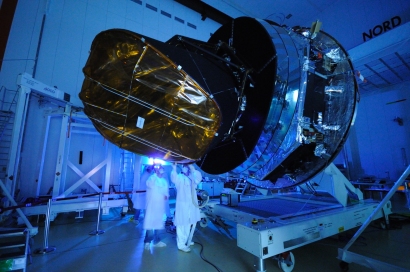Info on the mission(s)



sounds risky putting two telescopes like this in one rocket
What if it blows up?
http://www.esa.int/SPECIALS/Herschel/SEMBM00YUFF_0.html
Herschel at a glance
Herschel, ESA's cutting-edge space observatory, will carry the largest, most powerful infrared telescope ever flown in space. A pioneering mission to study the origin and evolution of stars and galaxies, it will help understand how the Universe came to be what it is today.
The first observatory to cover the entire range from far-infrared to sub-millimetre wavelengths and bridge the two, Herschel will explore further in the far-infrared than any previous mission, studying otherwise invisible dusty and cold regions of the cosmos, both near and far.
Herschel will tap into unexploited wavelengths, seeing phenomena out of reach for other observatories, at a level of detail that has not been captured before. The telescope's primary mirror is 3.5 m in diameter, more than four times larger than any previous infrared space telescope and almost one and a half times larger than that of the Hubble Space Telescope. The telescope will collect almost twenty times more light than any previous infrared space telescope.

http://sci.esa.int/science-e/www/object/index.cfm?fobjectid=33333
Planck will provide a map of the Cosmic Microwave Background (CMB) field at high angular resolution, covering at least 95% of the sky over a wide frequency range.
Planck has been designed to have ten times better sensitivity to temperature variations of the CMB and more than fifty times the angular resolution of the Cosmic Background Explorer (COBE) spacecraft.
The simultaneous mapping of the sky over a wide frequency range will permit the separation of Galactic and extragalactic foreground radiation from the primordial cosmological background signal. Planck will offer vastly improved performance compared to balloon-borne and ground-based experiments and will exceed the performance of other space-based instruments. The spacecraft revolves about its Sun-pointing axis once per minute to gyroscopically stabilise its attitude. Planck will use this stabilisation spin to operate in a sky scanning survey mode, observing at least 95% of the sky on two separate occasions within twelve months.
The spacecraft will measure the fluctuations of the CMB with an accuracy set by fundamental astrophysical limits.


sounds risky putting two telescopes like this in one rocket

What if it blows up?
